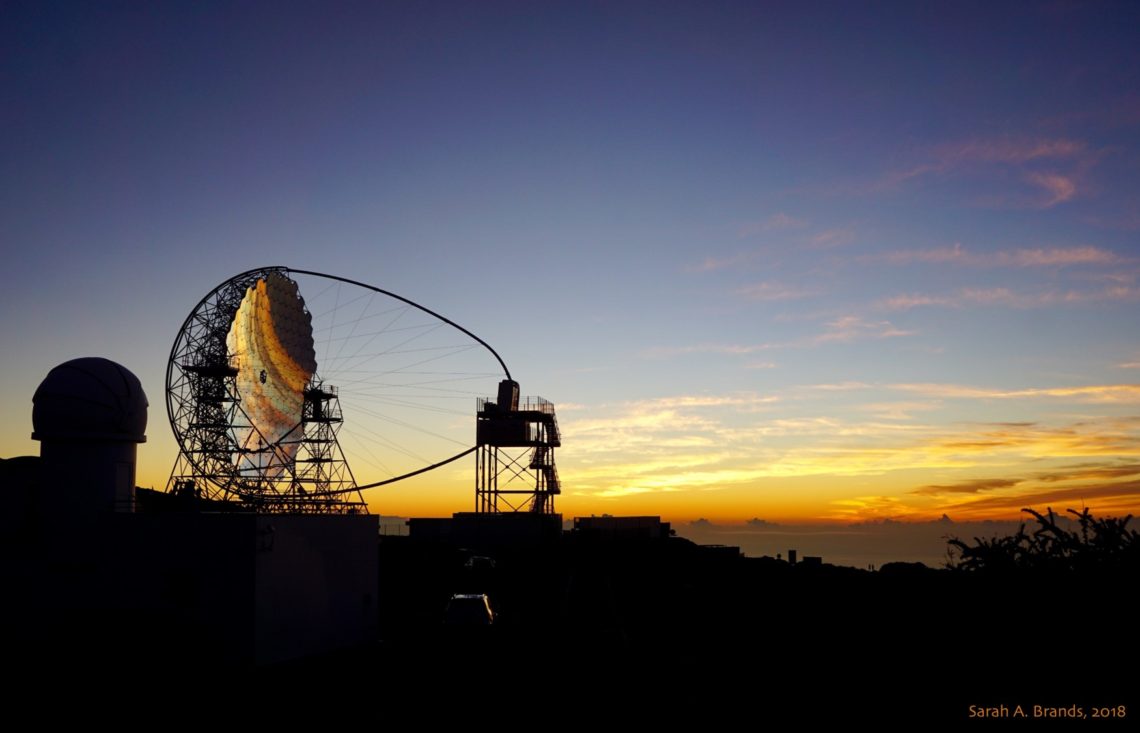There’s no doubt about it: Einstein’s general theory of relativity has changed the way we understand the cosmos, with its crowning glory being the discovery of black holes. Last year (2019), in May, I gave a short talk about the Event Horizon Telescope results on a webinar (link here) hosted by SPACE- India, an organization dedicated to bringing the wonders of space to school children in India. You can see the pdf of the talk here. I had a fun time interacting with them and (hopefully!) answered some of the questions from these curious young minds. I, of course, thank SPACE-India for the opportunity to reach so many kids. It…
Read More >>Fate of Jets in X-ray binaries: jet-wind interaction
Relativistic jets are ubiquitous and we can observe them in a wide range of scales: from stellar-mass objects (e.g., stellar-mass black holes, neutron stars or pulsars) to massive objects (e.g., active galactic nuclei, radio galaxies). In fact, those jets are key players in shaping our universe into what it is now. For example, jets from active galactic nuclei are powerful and capable of reaching very far from the central region of their host galaxy, it is generally accepted that they have provided a huge amount of heating into the universe. Without the heating, most galaxies might have significantly cooled down a long time ago; and had only old stars or…
Read More >>When A Black Hole Devours A Star
Black hole X-ray binaries are systems in which a stellar-mass black hole ‘feeds’ on (accretes) gas from a companion star. Gas from the star swirls around the black hole, forming an accretion disk. The accretion disk shines brightly at X-ray frequencies and black hole X-ray binaries are some of the brightest X-ray emitting sources observed in our galaxy. Black hole X-ray binaries (BHXRBs) have been observed to cycle between different ‘accretion states’. These accretion states are associated with different emission and outflow properties— Some accretion states are associated with very bright X-ray emission, while others display weak X-ray emission. In some accretion states weak outflows are driven from the disk…
Read More >>Astronomy occasionally sounds like a spy movie
Today’s story starts in 1967, at the height of the Cold War. The US Air Force has been using its Vela satellites to monitor any traces of gamma-ray radiation, a dead giveaway of nuclear tests being conducted on Earth. The goal is to make sure that the USSR is complying with the 1963 Nuclear Test Ban Treaty. On July 2nd, 1967, the Vela 3 and 4 satellites detect a gamma-ray flash that doesn’t look like anything observed before. Over time, they start seeing more and more of these events; according to myth, this was a terrifying find which was immediately classified. Nobody knew that such signals can originate from space,…
Read More >>Finding a candidate X-ray binary in another galaxy
Recently, I have been involved in a study looking for potential X-ray binaries in the relatively nearby spiral galaxy M83. And we think we found one! Here we refer to a microquasar as either a black hloe or neutron star X-ray binary. This work was led by Prof. Roberto Soria at the University of the Chinese Academy of Sciences, and was accepted for publication last week. Here is a link to the arXiv pre-print version. Finding a microquasar Jets from microqusars can produce shock-ionised bubbles as they shoot material out into their surroundings. These bubbles can look like peculiar shaped supernova remnants (SNRs, see Ping’s post for more details on…
Read More >>The changing sky monitored by ancient astronomers
Our ancestors have been monitoring the night sky since 5000 years ago, making astronomy the oldest natural science. Most stars seen on the night sky have been there for millions to billions of years, except that they rise and descend along with the Earth’s rotation. But if one is very patient and lucky, one could see that the sky is changing. For astrological purposes and other reasons, the variation of the sky had been recorded by ancient astronomers. In addition to the comets and meteors, many transient events occur outside of our Solar systems. The astronomical term “transient” expresses the phenomena that some celestial objects switch on and off their…
Read More >>Cherenkov Telescope Array (CTA)
SPOILER ALERT! We are in the year 2030 AD! So, if you do not wish to learn your future, you should stop reading now! Alright, for those of you who are still curious. Hundreds of new Supernovae have been detected. Structures in Supernova Remnants have shed light on particle acceleration, particle interactions and have also helped improve our understanding of diffusion. Powerful pulsars, both with and without surrounding wind nebulae (PWNe), have been detected on the Galactic plane shining light on the mystery of both magnetic fields and the evolution of such systems. Observations and theoretical work focusing on the closest supermassive black hole to Earth, Sgr A*, have yielded…
Read More >>Decelerating jets
I recently published my first paper in my Ph.D., focussing mainly on how jets accelerate from black hole accretion disks using first-principles general relativistic magneto-hydrodynamic simulations. It is an important question, how jets become relativistic, achieving high enough kinetic energy to affect the intergalactic medium upon collision. It turns out that the shape of jet matters a lot and that means, the ambient medium (i.e., the environment surrounding the black hole and the accretion disk) really needs to be evolved properly. Interestingly, when you evolve your simulation enough to give instabilities some time to work their magic, the jet begins to slow down. This slowdown happens because instabilities pick up…
Read More >>The journey of lights to a black hole
In today’s post, I would like to briefly talk about the features shown in the recent black hole image, and the efforts many people have paid for interpreting them. Someone would say that a black hole must be in the form of singularity, which makes it extremely difficult to prove its existence. However, over the decades, many theoretical works have been devoted to understanding the nature of the black hole and the effects of the general relativity; and providing the observational signatures that are expected. By the huge efforts of the international collaboration, the event horizon telescope (EHT) team has revealed the unprecedented image of the nucleus of the nearby…
Read More >>Jet launching in the black hole system MAXI J1535-571
Today I thought I would discuss results from my recent paper in ApJ (ArXiv link here). This paper presented results from a very long and comprehensive radio monitoring campaign of the black hole X-ray binary MAXI J1535-571 and included many people within the group. Using observations that I personally took with the Australia Telescope Compact Array (ATCA) (Figure 1), we were able to track the radio jet throughout the entirety of its 2017/2018 outburst. We found some very interesting and important results from this campaign. For the next part, you need to know that two types of jets are observed from black hole X-ray binaries. During lower accretion rates we…
Read More >>


